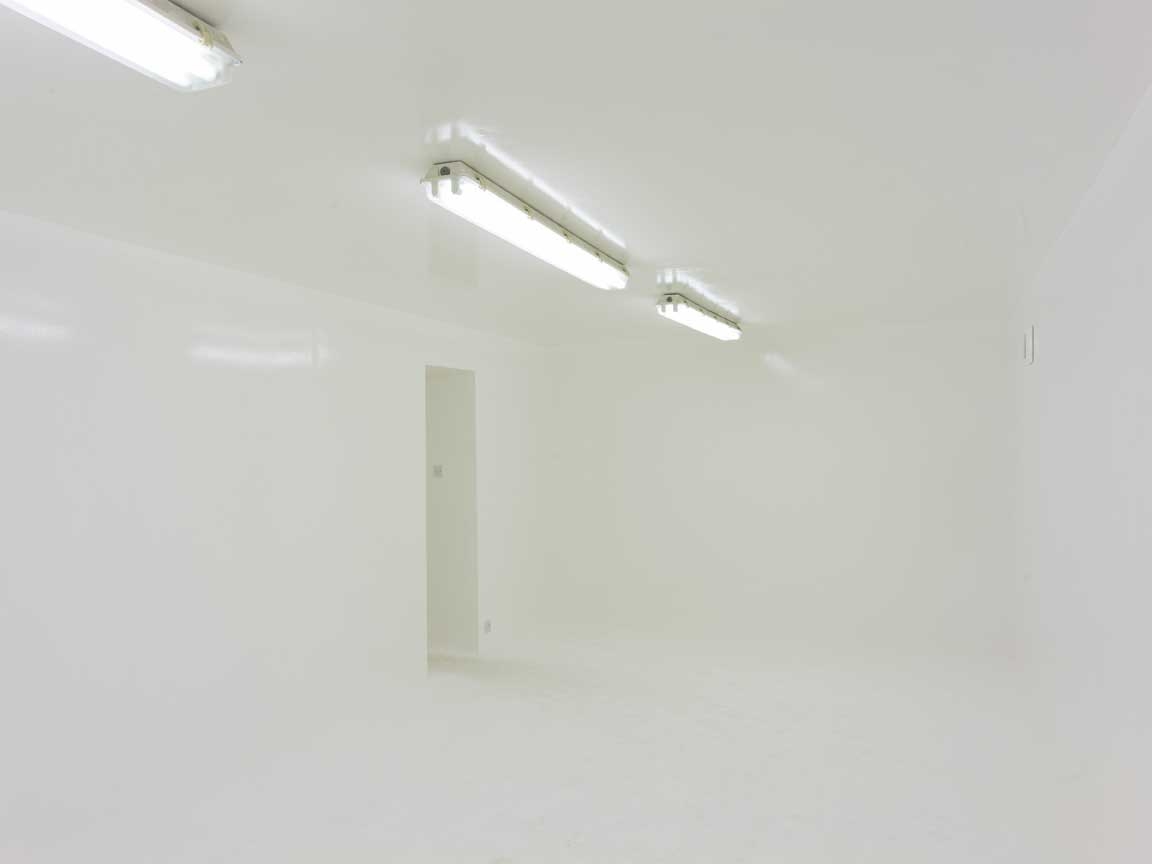I walk into a gloss-white corridor. White floor, white ceiling, white walls. The dazzle almost hurts the eyes. I open the door at the end. A room: white floor, white ceiling, white walls. There’s a door to my right, and a door straight ahead. I can hear the muffled sound of men talking and laughing. I take the door to the right. White floor, white ceiling, white walls. I walk this second corridor and try the door at the end of it. As the door opens, the sound of chatter gets clearer but then abruptly stops. I walk in. Black floor, black ceiling, black walls. Ten naked black men.
The men, previously chatting among themselves, are now uncomfortably silent. Well-built, penises flaccid, they stare at their feet. I stay with them for approximately a minute, but don’t attempt to talk to them. The room is warm and smells slightly of sweat. I leave through a second door, and out of the exhibition space, into the daylight.
The facts of Gregor Schneider’s new installation work, titled Süßer Duft Edinburgh 2013 (Sweet Scent Edinburgh 2013, 2013), commissioned as part of the Edinburgh Art Festival, are as above. The core of the work however – in all its manipulative, emotive, uncomfortable brilliance – lies in my reaction. Or rather it lies in the different reactions of each visitor; or rather the reactions of each visitor according to that person’s gender, sexuality and, perhaps most contentiously, race. I spoke to a friend afterwards – a straight white female. She said she had felt uncomfortable and, though she knew it was ‘just an artwork’, threatened to be in a room with so many naked men. She wasn’t expecting it; she had not given consent. Me, I’m gay, white, male. Dark rooms full of naked men mean different things in gay folklore. You don’t have to be a regular at the sauna to experience the clandestine frisson of the situation. This wasn’t threatening; it was exciting.
I asked my friend if the fact that all the men were black made them more threatening. Whether she, despite her impeccable, politically correct liberal credentials, was tapping into the stereotype that Katheryn Russell-Brown, the academic criminologist, has dubbed the ‘criminalblackman’. She answered no, of course not. I mentioned to her a blog post, written by Questlove, the drummer from the Roots, on New York magazine’s website that I had read recently. In it Questlove says he’s forever considering whether the way he looks – a tall, well-built African American – could be construed as threatening. He tells the story of a woman alone in a lift with him who, when he offered to press the right button, refused to tell him the floor she was getting off at. My friend said she’d read it.
I haven’t asked anyone of the same skin colour as the men in the room about Schneider’s installation. I haven’t asked a black male – who would, perhaps, neither feel the situation dangerous or, presumably if heterosexual, erotic – whether it spoke to him about black history. Whether the work successfully asked questions about being historically silenced, on being socially disenfranchised. Whether this person would mind my casual queer objectification of the men. Whether he took the work as a commentary on another form of objectification, slavery. I would ask whether he thought the installation comments on situations like Questlove’s, when the musician notes that, in a car park, he will ‘wait and wait in cars until I feel it’s safe for me to make people feel safe’. With Süßer Duft Edinburgh 2013 Schneider poses a lot of questions, but leaves them hanging, ready for us to provide the answers.
This review was first published in the October 2013 issue.
